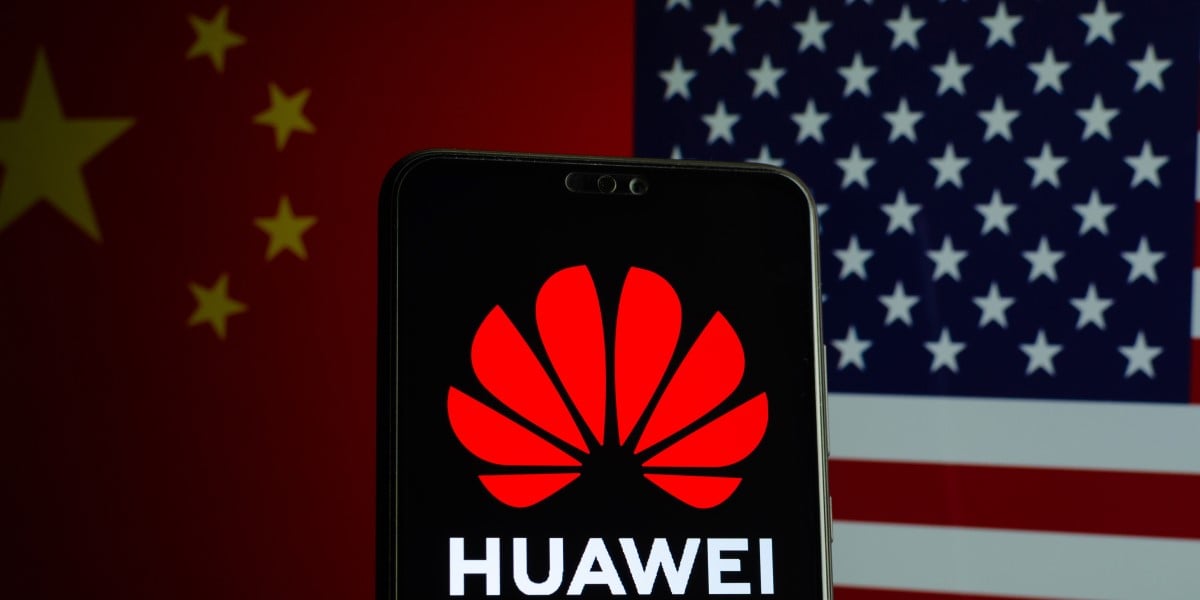Washington Left With Chip On Shoulder After Huawei Exposes Export Loophole Lapses

The US looks to be tightening up its technology export restrictions on China following Huawei's release of a new 5G smartphone using homemade chips, a feat many had thought it would not be capable of delivering.
Huawei launched the Mate 60 Pro without much fanfare at the end of August, but it caused a stir nonetheless because its very existence seemed to prove that Washington's efforts to curb Chinese progress in advanced semiconductor technology weren't entirely successful.
According to Nikkei Asia, two US lawmakers have now called for the government to close any loopholes in the technology export controls it has imposed on Chinese companies such as Huawei following the launch of the Mate 60 Pro.
Mike Gallagher, chairman of the House Select Committee on the Chinese Communist Party (CCP), is said to have pointed the finger at exemptions to the existing restrictions governing the export of semiconductor technology to the country, claiming these represent loopholes that allow Chinese companies to side-step the sanctions and access whatever technology they require.
Last week, Gallagher was reported to be calling for the US Commerce Department to end all technology exports to Huawei and Chinese chipmaker Semiconductor Manufacturing International Corporation (SMIC) after a teardown of the Mate 60 Pro revealed it is powered by a 7nm system-on-chip (SoC) from SMIC.
The chipmaker had previously been capable of producing only 14nm silicon at best, leading to accusations that it had been in breach of US technology restrictions.
"This chip likely could not be produced without US technology and thus SMIC may have violated the Department of Commerce's Foreign Direct Product Rule," Gallagher said in a statement. However, analysts suggested that SMIC could have modified imported chipmaking equipment it was still able to buy freely in order to produce 7nm chips.
Meanwhile, it seems that the Department of Commerce was warned about the ineffectiveness of its export restrictions before.
Back in March, House Foreign Affairs Committee Chairman Michael McCaul wrote a letter [PDF] to the department asking for clarification of the Biden administration's licensing policies regarding Huawei, claiming that "the current practice appears to deny few if any licenses to Huawei – even for items on the Commerce Control List."
McCaul went on to state that although the US authorities had been using the Entity List and Foreign Direct Product Rules (FDPR) to contain Huawei's march to dominate 5G telecoms systems worldwide, it was still able to buy significant amounts of US technology.
Licenses authorizing at least $61 billion in exports of technology to Huawei were approved between November 2020 and April 2021, McCaul claimed.
- China iPhone curbs reportedly extend to local government and state-owned businesses
- SK hynix says no Huawei its memory should be in Chinese wonder-phone
- Chinese meme-makers crown US Commerce Secretary as Huawei brand ambassador
- US and China to keep talking about chip bans, just not when they'll end
This is despite the US Department of Defense including Huawei on a list of "Communist Chinese military companies operating in the United States" in 2020 (a claim that Huawei has previously denied, although under Chinese law, citizens and organizations are required to support intelligence gathering efforts by Beijing).
Huawei declined to comment on reports that its new smartphones might spark tighter and better policed US restrictions against it.
It was also reported that the teardown of the Mate 60 Pro revealed it contained LPDDR5 memory chips from Korean memory maker SK hynix, which are also covered by trade restrictions.
This could potentially land the company in hot water as the US has granted it exemptions from some export restrictions so that the company can continue with its China-based manufacturing operations.
SK hynix issued a statement denying any involvement and insisting that it no longer does business with Huawei since the introduction of the US sanctions on the company in 2020, as reported by The Register last week.
It is possible that Huawei managed to secure supplies of certain components such as these memory products via unofficial sources, or the so-called grey market. This highlights the difficulty of enforcing trade restrictions on many goods since vendors have only limited control over what happens to their products after they have passed into the hands of distributors.
It had previously been reported that Huawei was struggling because US sanctions were denying the company the advanced chips for smartphones that it required to make new models, so the restrictions are taking some toll on the business.
Huawei was last month linked with the creation of a covert network of semiconductor facilities across China to tackle the limitations of US sanctions that have choked off its supply of chips. ®
From Chip War To Cloud War: The Next Frontier In Global Tech Competition
The global chip war, characterized by intense competition among nations and corporations for supremacy in semiconductor ... Read more
The High Stakes Of Tech Regulation: Security Risks And Market Dynamics
The influence of tech giants in the global economy continues to grow, raising crucial questions about how to balance sec... Read more
The Tyranny Of Instagram Interiors: Why It's Time To Break Free From Algorithm-Driven Aesthetics
Instagram has become a dominant force in shaping interior design trends, offering a seemingly endless stream of inspirat... Read more
The Data Crunch In AI: Strategies For Sustainability
Exploring solutions to the imminent exhaustion of internet data for AI training.As the artificial intelligence (AI) indu... Read more
Google Abandons Four-Year Effort To Remove Cookies From Chrome Browser
After four years of dedicated effort, Google has decided to abandon its plan to remove third-party cookies from its Chro... Read more
LinkedIn Embraces AI And Gamification To Drive User Engagement And Revenue
In an effort to tackle slowing revenue growth and enhance user engagement, LinkedIn is turning to artificial intelligenc... Read more

